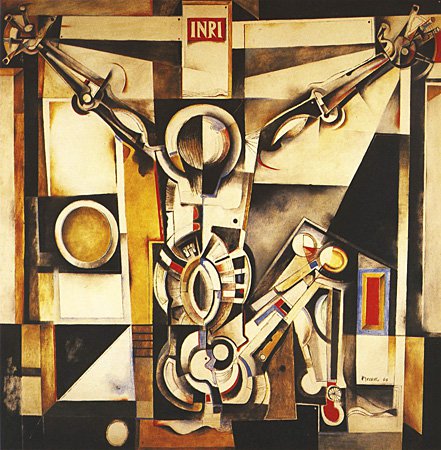Cultural Center of the Philippines
ENCYCLOPEDIA OF
PHILIPPINE ART
Crucifixion
1968 / Oil on canvas / 182 x 182 cm / Artist: Ang Kiukok / Private collection
Ang Kiukok’s painting career can be summed up as a dichotomy of a struggle for human expressiveness and a constant perfection of cubistic pictorialism. The human condition at its most pathetic or angriest predicament has always inspired this artist. Suffering and torture are images familiar to him as he witnessed these in his boyhood during World War II. Images of such cruelties continue to haunt him in the political and criminal violence reported daily by the mass media. While Western cubism is all about objective analysis of physicality, Ang Kiukok borrows its approach and techniques to pursue the opposite—that is, to synthesize what has been broken down into a unified interpretation of human agony. To him, agony is a universal fate rather than a specific circumstance.
A pupil of Victorio Edades and Vicente Manansala, Ang Kiukok emerged as an accomplished painter in the 1960s, pursuing the theme of the mechanization of the human beings and the crucifixion of Christ in several of his works. In this Crucifixion, Christ is a duality of tortured victim and alienated android. The figure’s drooping head and the muscular tension emoted by the rendition of arms and hands signify the human angst in Christ’s violent death. The suggested wheels, cranks, and levers that compose Christ’s lower torso alludes to the dehumanization of modern men and women in the age of machines. The formal balance, as brought by the centrality of the cross and the composition of squares in cream and black, imbues a spiritual restraint to an otherwise raging theme.
Written by Imelda Cajipe-Endaya
